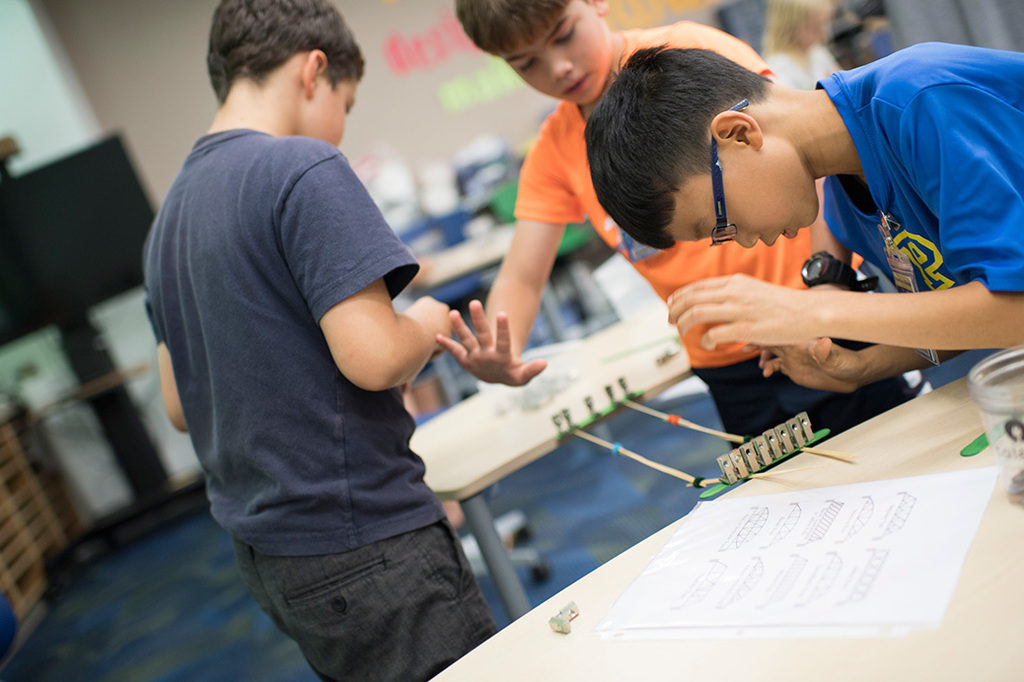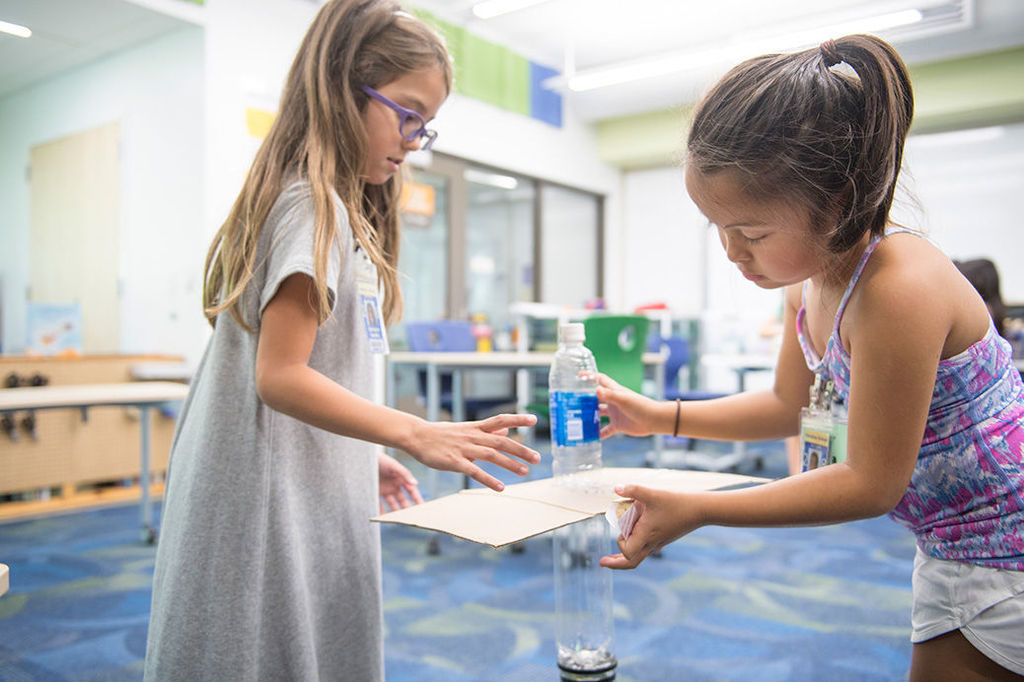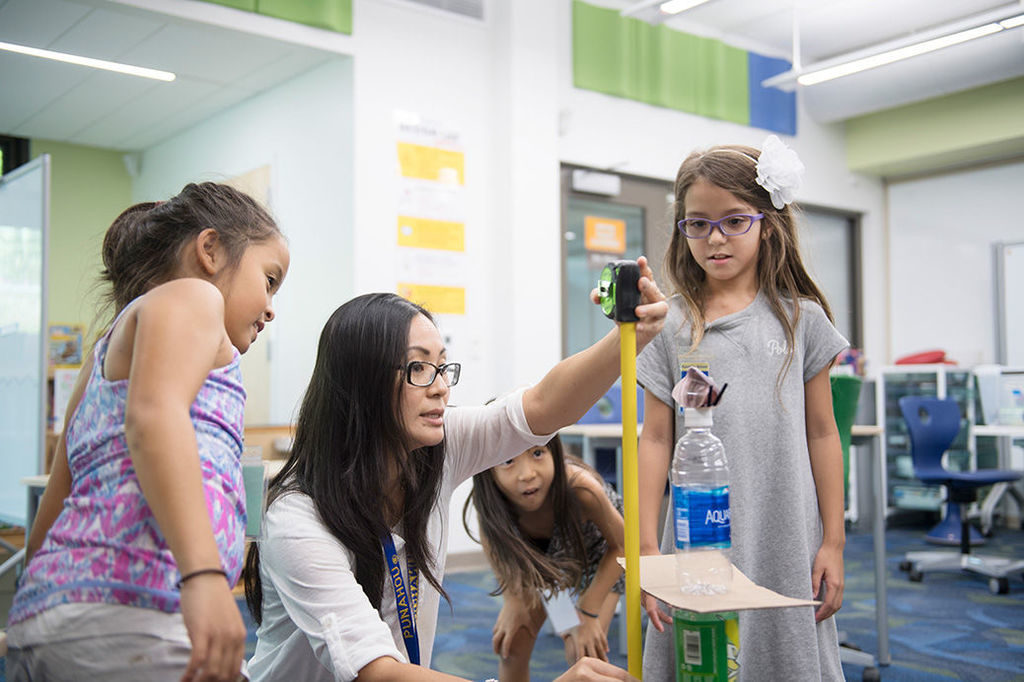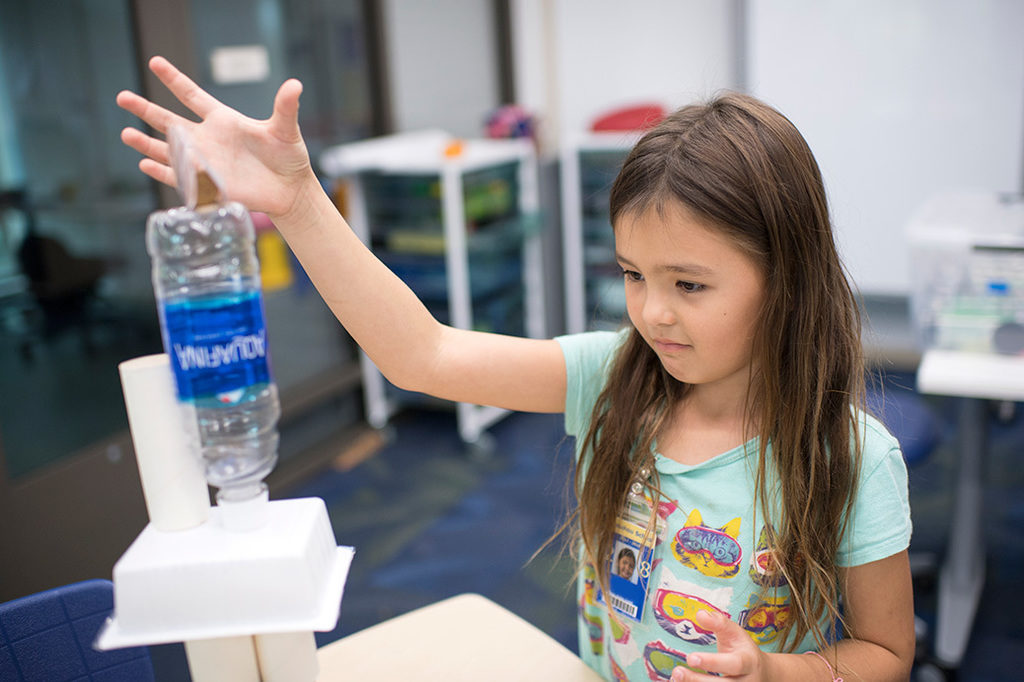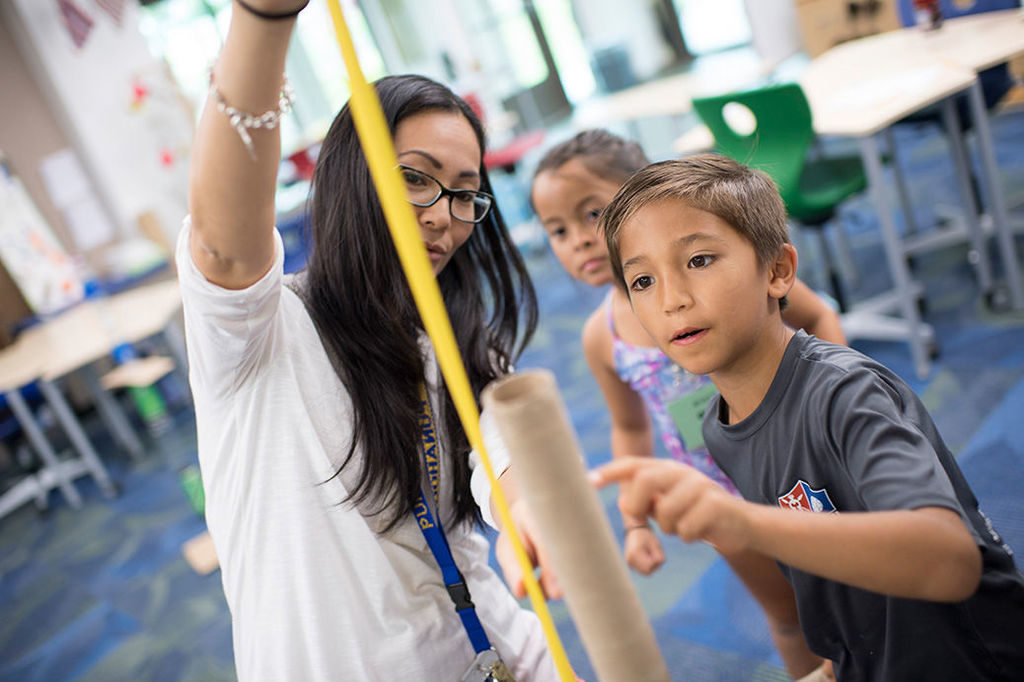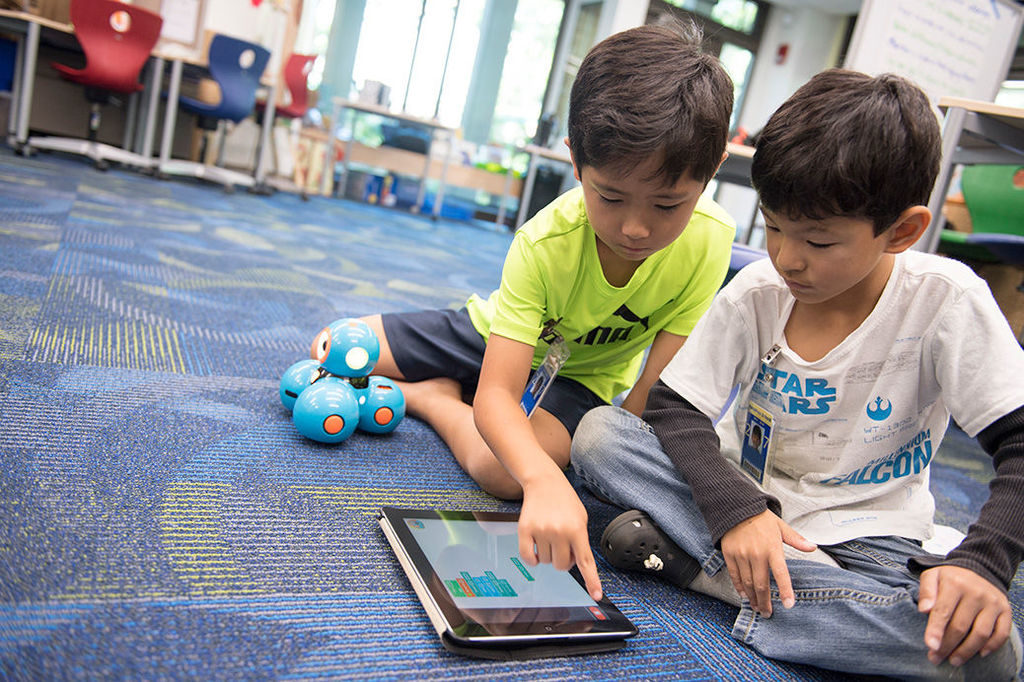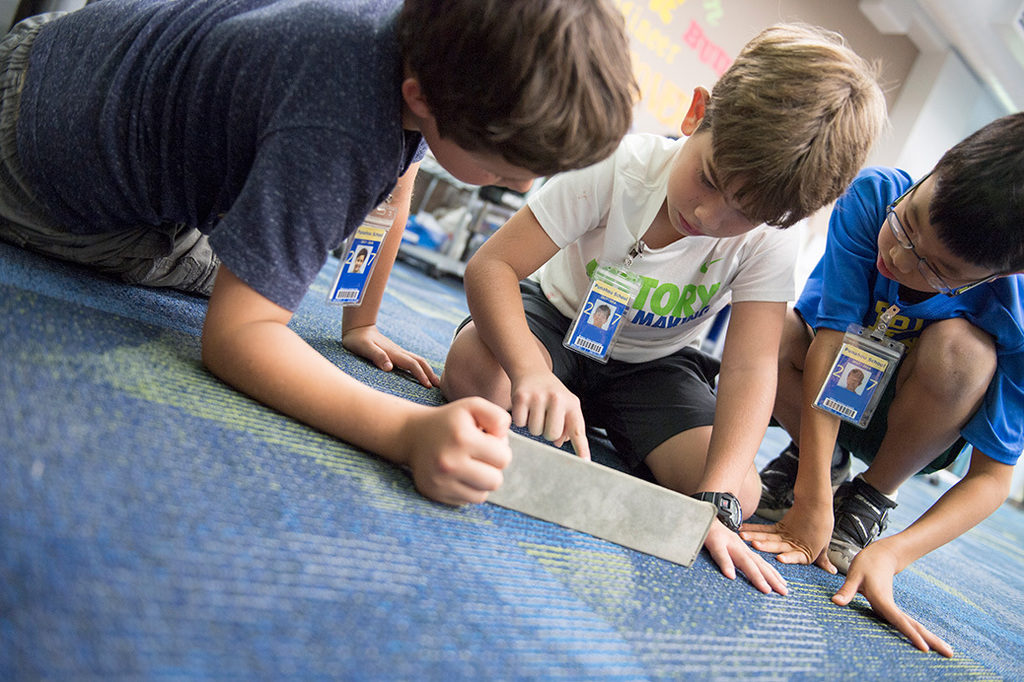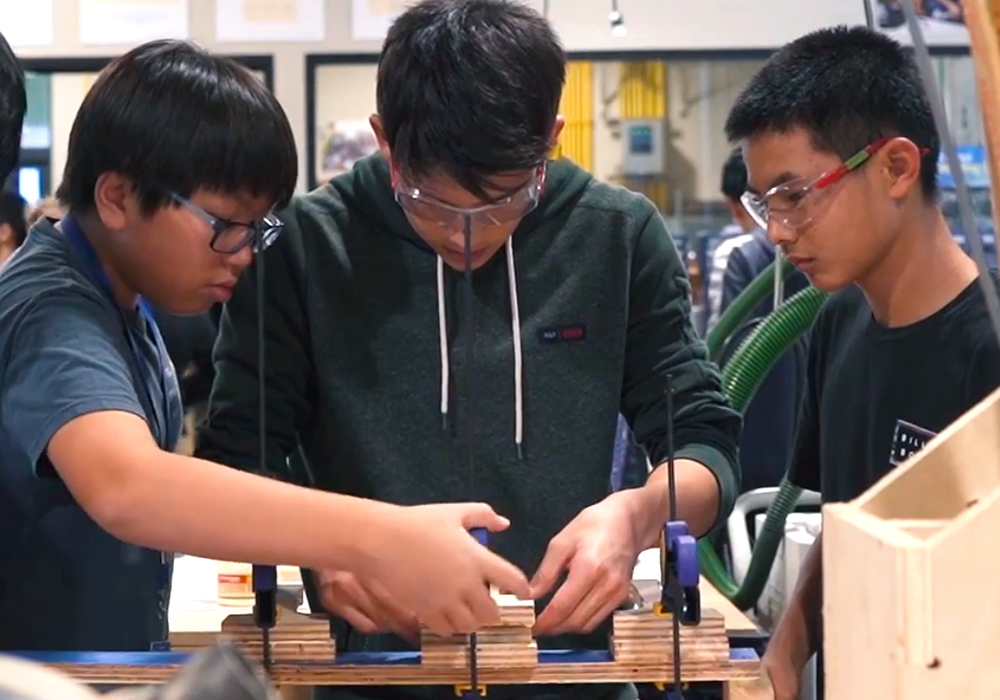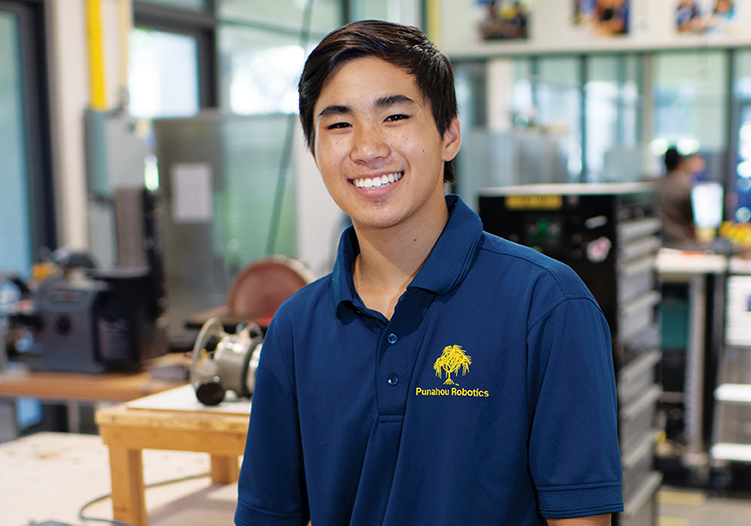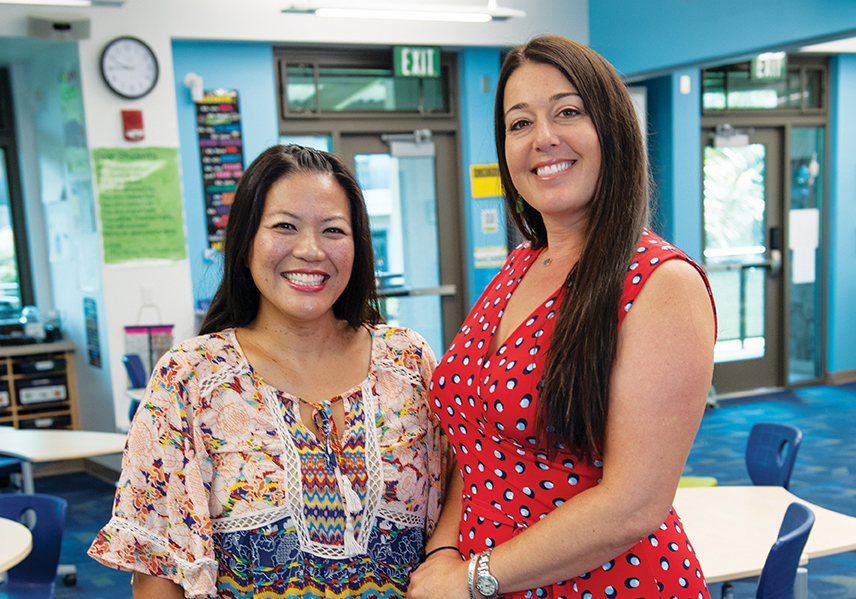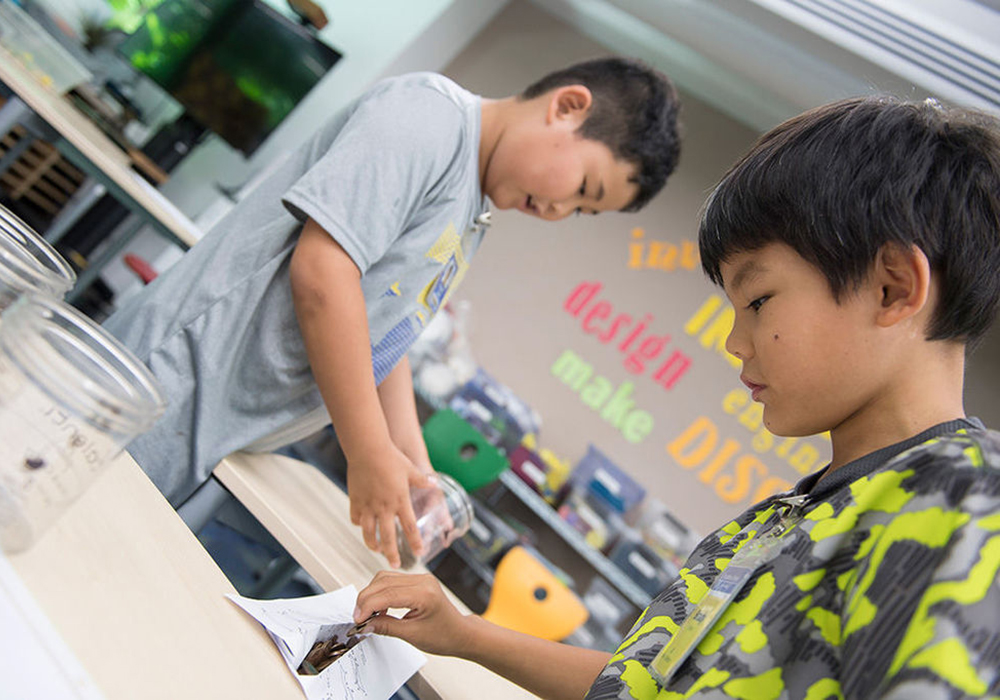
By Punahou Communications Staff
“We’re here to build!” exclaims a third-grade boy and his friend as they burst into the Kosasa Makery as the playground outside fills with students during recess. Design, Makery, Engineering and Technology (D-MET) faculty Liz Castillo reminds the two to sign in and find their planning sheet from the day before.
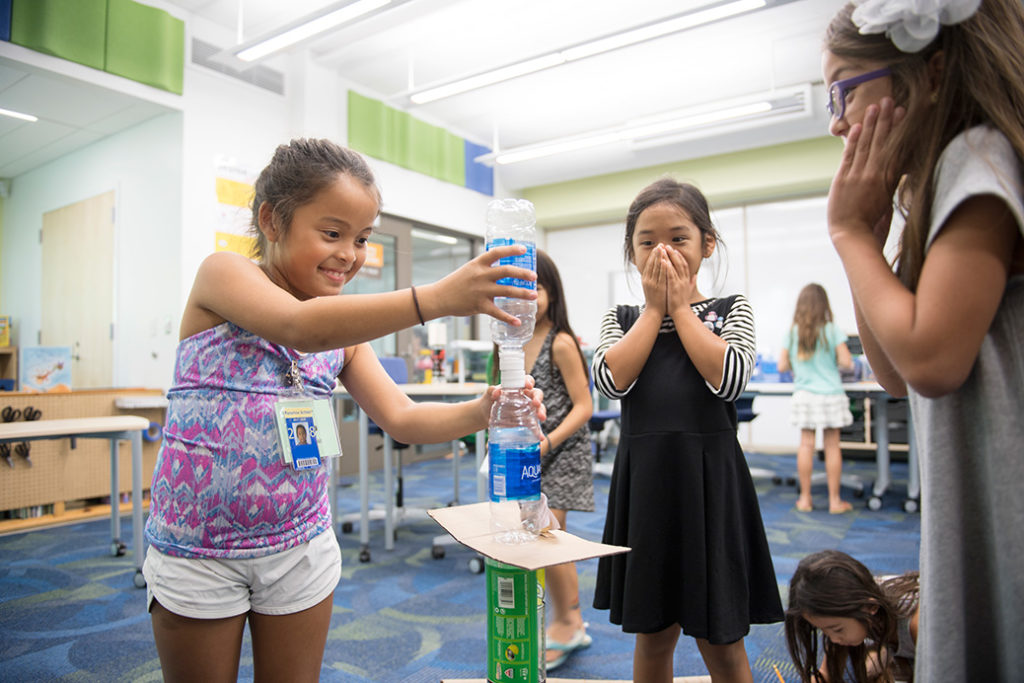
The boys, who are soon joined by about a dozen other third-graders in teams of two or three, are regular participants in the design challenges that Castillo and her colleagues in the D-MET department organize each cycle at the Sidney and Minnie Kosasa Community.
Today’s design challenge is to build a tower using recyclable materials like paper towel rolls, pipe cleaners, empty tofu containers and cardboard. The structure represents a theoretical recovery habitat for the endangered Hawaiian tree snail. They must also work within the constraints of an imaginary $50 budget, which creates artificial limits on the materials students can use. Items range from $1 to $20 (scotch tape being the most expensive, to discourage this easy solution) and students came in the previous day to “purchase” their materials and plan their tower design.
Over the course of the 20-minute recess period, a variety of shapes and constructions begin to appear. Some teams are so engrossed in their planning that the five-minute warning startles them into a hasty build. Others observe their neighbors keenly, incorporating ideas and techniques. The moment of greatest anticipation comes when delicately balancing the tree snail on top. A few towers tip and fall at the last minute, requiring the re-stabilization of their bases. Castillo goes around with a tape measure to record finishing heights on the white board, and seeing the numbers – 24 inches, 31 inches, 40 inches! – galvanizes some teams to redouble their efforts and create an even taller structure. A pair of girls completes their tower and one of them says affectionately, “We made this just for you, little tree snail.”
The skills being practiced in this activity include math (in the budgets), project planning, environmental awareness and empathy (with the tree snail), design and engineering, teamwork, communication, resilience and “failing forward” by trying multiple approaches before one proves feasible. But across the board, students are engrossed in their work. Whether motivated by getting the highest score, or the challenge of building something three-dimensional from scratch, they are intent on accomplishing their goal. Castillo reminds the group several times that the recess-ending bell has rung and they mustget back to class.
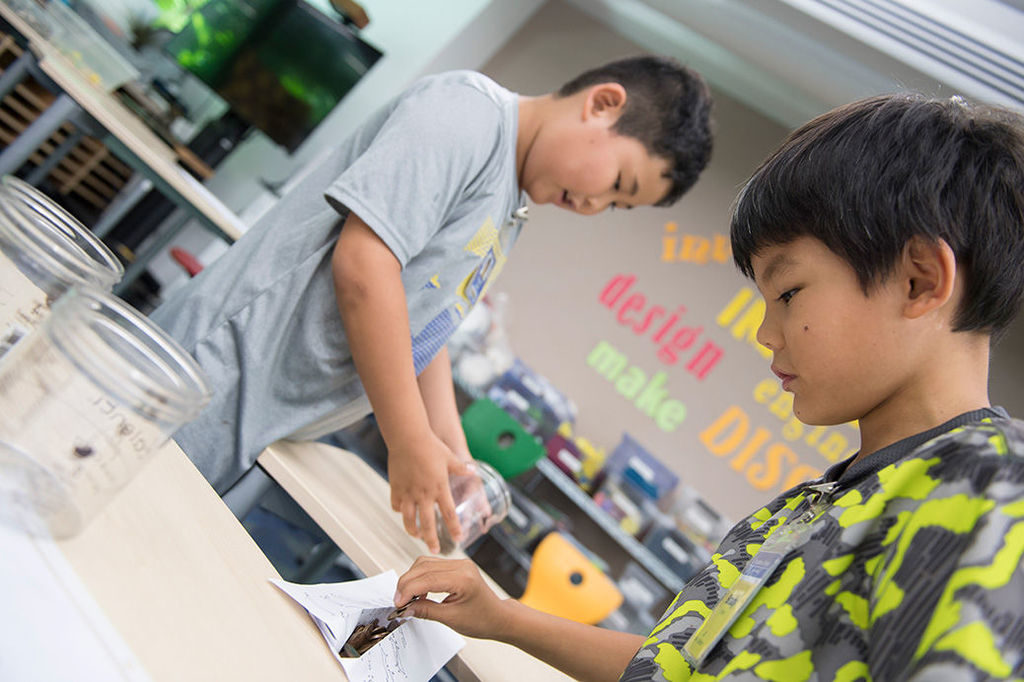
Part of an ongoing effort to incorporate design thinking into the curriculum in preparation for the opening of the Junior School Learning Commons (scheduled for fall 2019, along with the second phase of the Kosasa Community), the design challenges build upon lessons learned last year, when Castillo and others led an “Imagineering” class for students in grades 2, 3 and 5.
“Last year we wanted to see what kind of skills were age-appropriate and we were also testing the idea of makerspaces as structured activities that kids could experience in a regular time slot,” said Castillo. She echoes the fact that the faculty, too, are using the iterative design thinking process to refine the best way to deliver this type of hands-on problem-solving curriculum to students.
“One thing that that we found in the model last year, when kids came to us once a cycle, is that they’re just getting started with their ideas when the period is over and we wouldn’t see them for another week. The hope this year is to have a space where a class can come in for two to three hours if the teacher wants, or kids can come in for several days in a row on their own,” she said.
The recess challenges are opt-in for students but many come on a regular basis. In one, children built an aerodynamic object representing a native Hawaiian honeycreeper that would float high enough in a wind tunnel to reach the ohi’a flowers it needed in order to survive. In another, students constructed a bridge using a single sheet of paper that would sustain the largest number of pennies over a 10-inch gap (the winning team managed to stack 160).
“The thing about making something is the learning becomes ‘stickier,'” said Castillo. “We see that the kids connect to what they’re creating. And if it’s connected to what they’re learning, they’re going to remember it. And we’ve observed they’ll remember it longer than when they are reading and reporting. So the learning is more enduring.”




